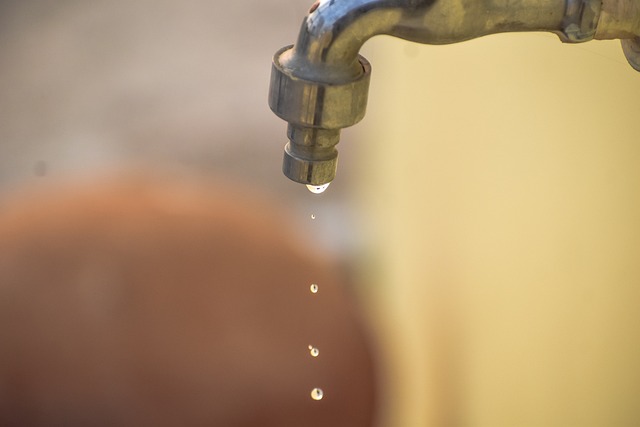Ensuring the integrity of aging plumbing systems is crucial to prevent costly damages. Pressure testing for leaks offers a proactive approach to identify vulnerabilities before they escalate into major issues. By conducting regular pressure tests, homeowners can pinpoint leaks early on and address them promptly, contrasting with the potential devastation of undiscovered leaks. This preventive measure not only safeguards your property but also saves you from the headache of dealing with extensive repairs down the line.
Table of Contents
ToggleUnderstanding Hydrostatic Pressure Tests
Hydrostatic pressure testing involves filling a plumbing system with water to assess its integrity by detecting leaks.
The primary objective of a hydrostatic pressure test is to identify any potential leaks within the plumbing system.
This test is crucial for aging plumbing systems as it helps in pinpointing weak spots before they escalate into major issues, preventing costly repairs and damages.
To conduct a hydrostatic pressure test, the plumbing system is filled with water under high pressure.
Inspectors then monitor the system for a specific duration to check if there is any drop in pressure, which could indicate a leak.
If there is a drop in pressure, further investigation is required to locate and repair the leak promptly.
Why Hydrostatic Tests Are Essential
Detecting hidden leaks early plays a crucial role in maintaining the integrity of aging plumbing systems. These leaks, if left undetected, can lead to significant water damage and costly repairs.
Hydrostatic pressure tests play an important role in identifying these leaks before they escalate into major issues. By subjecting the plumbing system to high-pressure water, any weaknesses or vulnerabilities can be pinpointed accurately.
The importance of these tests lies in their ability to prevent structural damage that can result from leaks over time. Undetected leaks can weaken the foundation of a building, leading to potential collapses or severe structural issues.
Conducting A Home Plumbing Pressure Test
Hydrostatic Testing Process
To conduct a home plumbing pressure test, begin by shutting off the main water supply to the house. Next, attach a pressure gauge to an outdoor faucet to monitor water pressure accurately.
After ensuring all faucets are turned off, open one faucet to release any remaining pressure in the system. Then, fill the pipes with pressurized water gradually and monitor the gauge for fluctuations.
Importance Of Professional Assistance
Seeking professional assistance is crucial for accurate results during a sewer water test. Professionals have the expertise to interpret pressure readings correctly and identify potential issues like leaks or low water pressure.
Professional plumbers can also provide guidance on how to address any problems detected during the test effectively. Their experience ensures thorough testing and reliable results.
Significance Of Blocking The Plumbing System
Blocking the plumbing system by closing all valves and faucets before conducting a water meter test is essential. This step prevents any interference with the pressure readings, ensuring accurate measurements.
Frequency Of Hydrostatic Pressure Testing
Factors Influencing
The frequency of hydrostatic pressure testing is influenced by various factors, including the age of the plumbing system, material used in the pipes, and the history of leaks. Older plumbing systems are more prone to deterioration and leaks, necessitating more frequent testing. If there have been previous issues with leaks or water damage, more regular pressure tests may be required to ensure the system’s integrity.
Importance Of Age Consideration
When determining how often to conduct a hydrostatic pressure test, it is crucial to consider the age of the plumbing system. Older systems are more susceptible to wear and tear, corrosion, and potential weaknesses that can lead to leaks. As pipes age, they become more brittle and prone to cracks or breaks under pressure. Therefore, for aging plumbing systems, more frequent pressure testing is essential to detect any potential leaks early on and prevent costly water damage.
Recommendations For Scheduling
To ensure the optimal performance and longevity of your plumbing system, it is recommended to schedule a hydrostatic pressure test at least once every two to five years for older systems. However, if your home has experienced frequent leaks or water-related issues in the past, it may be advisable to conduct tests more frequently. Regular pressure testing not only helps identify existing leaks but also prevents future ones by proactively assessing the condition of your pipes.
Preparing For A Pressure Test
Clearing Obstacles
Before conducting a pressure test, it’s crucial to ensure that the area around the plumbing system is clear of any obstacles. This includes removing items like toilets, sinks, or other fixtures that could obstruct the testing process. By eliminating these barriers, you can accurately assess the condition of the pipes and identify any potential leaks.
Monitoring Water Levels
During a pressure test, it’s essential to monitor water levels closely to detect any fluctuations that could indicate leaks in the system. By observing changes in water levels, technicians can pinpoint areas of concern and address them promptly. This level of vigilance is critical for identifying even minor leaks that may not be immediately visible.
Ensuring Proper Equipment
To conduct a successful pressure test, specialized equipment such as a pressure gauge is required to measure the pressure levels within the plumbing system accurately. The pressure gauge plays a key role in determining whether the system can maintain consistent pressure over time. Monitoring temperature changes during the test is essential to account for any variations that could affect the accuracy of the results.
Importance Of Thorough Process
The pressure testing process involves subjecting the plumbing system to increased pressure levels to evaluate its integrity and detect any leaks. This method allows technicians to assess the overall condition of aging pipes and identify potential issues before they escalate into major problems. By following a systematic approach and using reliable equipment, technicians can obtain precise test results that inform necessary repairs or maintenance tasks.
Material Considerations
When preparing for a pressure test, it’s important to consider the type of material used in the plumbing system. Different materials may react differently to increased pressure levels, leading to varying outcomes during testing. Understanding how each material responds to pressure changes is essential for interpreting test results accurately and making informed decisions about repairs or replacements.
Identifying And Tracing Leaks
Leak Detection Methods
During a pressure test, various methods are employed to identify leaks in aging plumbing systems. Professionals use advanced techniques like tracer gas and camera inspections to pinpoint potential leaks accurately.
Tracing Back To The Source
Once a leak is detected, the next step involves tracing it back to its source. By conducting a thorough visual inspection, professionals can follow the visible signs of leakage to determine the exact location of the issue.
Assessing Damage Extent
After identifying and tracing leaks, professionals need to assess the extent of damage caused by water leaks. This involves evaluating the transparency of the affected area and determining if there are any undetected leaks that may lead to further problems.
Benefits Of Regular Pressure Testing
Regular pressure testing provides early detection of leaks, allowing for prompt repairs and preventing extensive damage. By identifying issues early, homeowners can avoid costly repairs and potential water damage.
Conducting regular pressure tests on aging plumbing systems helps in maintaining the overall health of the system. It ensures that any weaknesses or vulnerabilities are identified and addressed before they escalate into major problems.
One of the key benefits of regular pressure testing is the cost-saving aspect. Detecting leaks early through these tests can save homeowners significant amounts of money by addressing issues before they worsen. This proactive approach helps in avoiding expensive repairs and water damage restoration.
Preventing Costly Plumbing Issues
Hydrostatic pressure testing is vital for aging plumbing systems as it helps in detecting leaks before they escalate into major plumbing issues. By subjecting the plumbing system to high water pressure, any weaknesses or vulnerabilities in the pipes can be identified early on.
Regular hydrostatic pressure tests can pinpoint potential plumbing leaks that may go unnoticed otherwise. Ignoring the need for such testing can lead to undetected leaks causing extensive damage over time. Early detection through pressure testing can prevent catastrophic pipe bursts and water damage to your property.
Neglecting pressure testing for aging plumbing systems poses significant risks. Without regular maintenance and checks, old plumbing pipes are prone to corrosion and deterioration. This can result in costly repairs or even complete pipe bursts, leading to water supply disruptions and increased water bills.
Copper pipes, commonly found in older plumbing systems, are especially susceptible to corrosion over time. Ignoring the signs of deteriorating pipes can lead to unexpected leaks and subsequent damage to your property. Regular hydrostatic pressure testing is crucial for identifying these issues early on.
Investing in proactive leak detection through hydrostatic pressure testing can result in substantial long-term savings. By detecting and repairing minor leaks promptly, you can avoid the need for costly emergency repairs due to sudden pipe bursts or extensive water damage.
Proactively addressing corroded pipes and potential plumbing leaks not only safeguards your property but also helps in reducing water wastage and lowering your overall water bills. Hiring a professional plumber to conduct regular pressure tests can help you maintain the integrity of your plumbing system and avoid unexpected expenses.
Monitoring And Maintaining Plumbing Health
Importance
Regular inspections of your plumbing system are crucial to detect issues early and prevent costly repairs. Leaks in aging piping can lead to water damage, mold growth, and even health risks.
Maintaining good water quality is essential for the longevity of your plumbing system. Contaminants in the water supply can corrode metal pipes, leading to leaks and reduced supply quality.
Role Of Regular Maintenance
Scheduled inspections by professionals can identify potential problems before they escalate into emergencies. Timely repairs and maintenance help in prolonging the lifespan of your plumbing system.
By addressing minor issues promptly, you can avoid major breakdowns that may disrupt your daily activities. Regular maintenance also ensures that your drain and main water supply remain free from blockages and obstructions.
Tips For Optimal Condition
One effective way to maintain a healthy plumbing system is by scheduling annual check-ups with a certified plumber. These routine inspections help in identifying hidden leaks or weaknesses in the system.
Ensuring proper ventilation for your HVAC systems can prevent moisture buildup, reducing the chances of mold growth within your piping. Keeping your pipes clean from debris and mineral buildup improves overall water flow and quality.
- Regularly check for signs of water leaks such as damp spots on walls or ceilings.
- Avoid using harsh chemicals that can corrode pipes; opt for environmentally friendly cleaning products instead.
- Insulate exposed pipes during colder months to prevent freezing and potential bursts.
Summary
Ensuring the health of your plumbing system is crucial, especially as it ages. Conducting regular hydrostatic pressure tests can help you detect leaks early, preventing costly damages down the line. By scheduling these tests periodically and staying proactive, you can maintain your plumbing’s integrity and avoid unexpected issues that could disrupt your daily life. Remember, prevention is always better than cure when it comes to plumbing problems. So, don’t wait for a disaster to strike; take charge of your plumbing’s well-being today.
Discover The Premier Service For Pressure Testing For Leaks With Garcia Plumbing And Home Restoration!
At Garcia Plumbing and Home Restoration, we recognize the critical importance of identifying and addressing leaks in your home’s plumbing system. Our team, celebrated for its expertise in conducting thorough pressure testing, is dedicated to detecting even the most elusive leaks, ensuring the integrity and efficiency of your plumbing system.
Our dedication at Garcia Plumbing and Home Restoration goes beyond merely identifying leaks; we strive to prevent potential damage and maintain the long-term health of your plumbing. We have earned an outstanding reputation in Contra Costa County for our commitment to quality, our extensive knowledge of plumbing systems, and the trust we have established with numerous satisfied customers. Don’t let hidden leaks threaten your home’s safety and comfort. Contact us today for top-notch pressure testing services and enjoy the confidence of a leak-free and efficient plumbing system!




